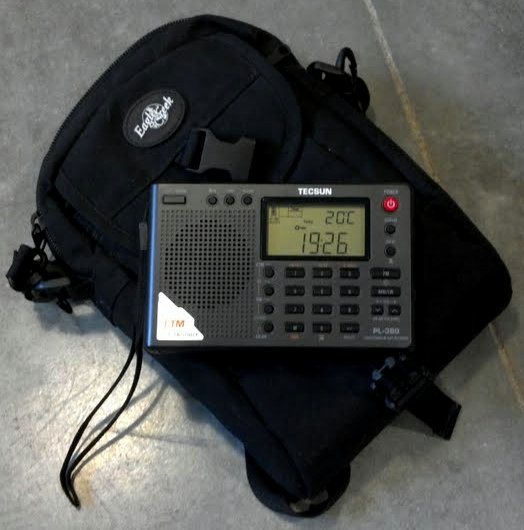
The PL-380 was one of the first portable DSP radios I purchased. It was mind-blowing at time of introduction and I still have it in my radio arsenal.
Without a doubt, DSP (Digital Signal Processing) technology has forever changed the portable receiver market in so many positive ways:
- It’s made portable radios more affordable for consumers
- It’s increased the profit margin for manufacturers
- It’s made features like SSB mode and variable filter width affordable
- When properly implemented, DSP technology can provide DX-grade performance even in Ultralight receivers
- All-in-all, DSP technology has made portable receivers more accessible and has undeniably reinvigorated the shortwave radio market over the past decade
All very good things!
But I must admit, I do miss legacy receiver design–for example, dual-conversion frequency synthesized radios like the Sony ICF-SW7600GR:
Or the Panasonic RF-B65:
For me? It’s all in the noise and static.
I think we’re probably all wired a little differently when it comes to how we listen.
I know radio enthusiasts that can pull station IDs out of the noise with their AM or SSB filters set to very narrow widths. I have trouble doing this and tend to actually widen filters when doing weak signal work (assuming there are no adjacent stations). It’s as if the filter in my brain needs more information–more bandwidth–to increase intelligibility. I only engage narrow filters to block adjacent signals or (for narrow bandwidth modes like CW) to decrease the influence and effects of atmospheric/natural noises (QRN).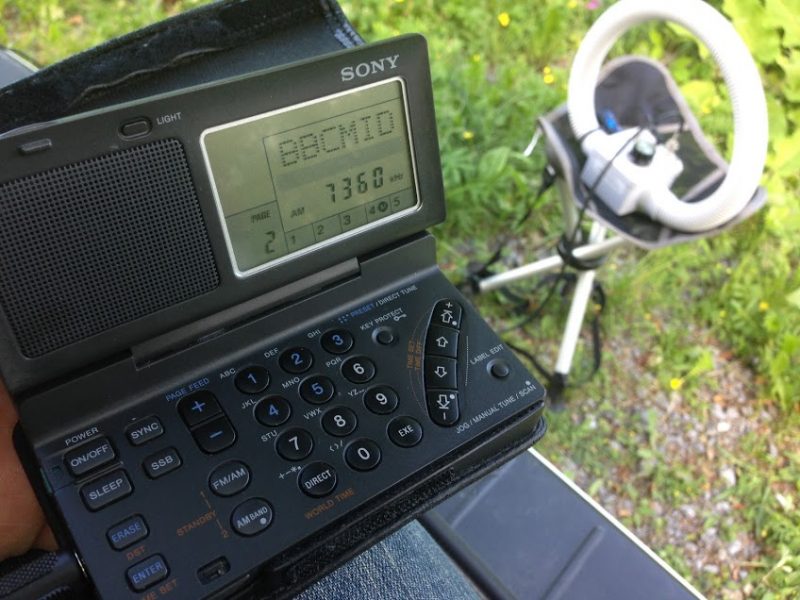
I find that many DSP portables add a “mushy” audio quality to the static found in the noise floor of the receiver. I hear DSP artifacts and that “watery” quality especially if using headphones. No doubt, it’s the DSP simply doing its thing: minimizing background noise and seeking to clarify voice and audio information. But this actually tinkers (or interferes) with my brain’s ability to pull out intelligible information to some degree.
I find I prefer the audio quality of static in analog receivers.
Of course, a bit of this might also be tied to a receiver’s dynamic range and AGC; qualities I also tend to prefer in my benchmark legacy portables.
Does this make any sense?
In truth, this is difficult to explain and, dear reader, I may very well have lost you here. If not, I’m curious what you think.
Do you prefer the audio characteristics of DSP receivers, or legacy receiver architecture? Are there aspects you like of both? Please comment!

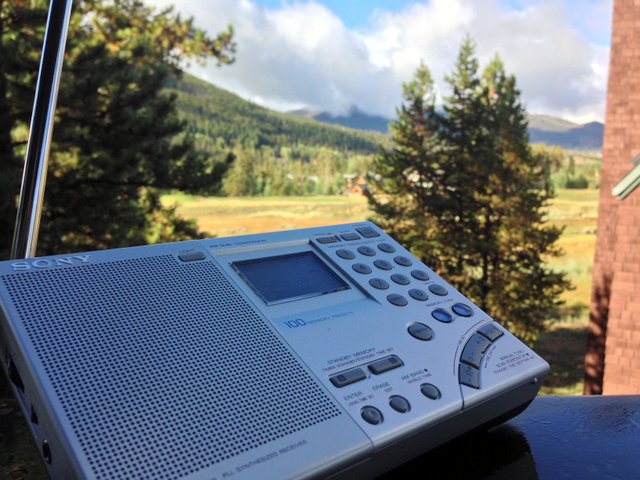
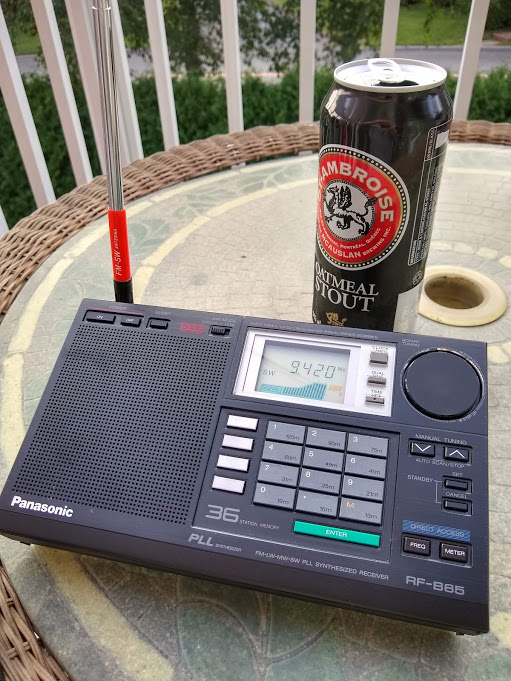
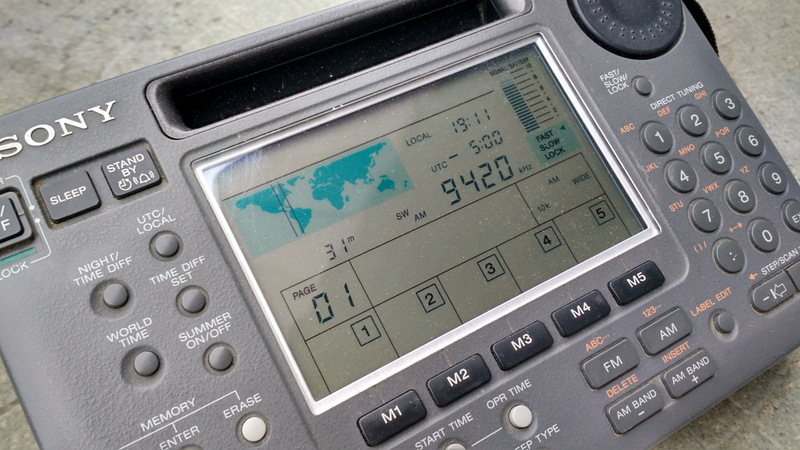
Analog receiver is the best… but with addition of a synchronous detector. There is a very good synchrpjous detector module SD-7 available, but you need to fit it into (preferably) valve radio.
Good sound quality in the fading conditions, FM sound quality on local AM stations when the receiver is detuned to get one full wideband. But most amazing is noise immunity when DXing — noise exceeding the signal is converted to higher frequencies (like monkey chatter) and easily filtered by the best filter — your ear.
I was started in radio listening in my childhood wit a simple AM radio. This makes me prefer the classic heterodyne radio for LW, MW and SW DXing, including the “hiss” and statics sound. (For me was like magic when at the end of day and during night new stations start to appear. At the mornig they goes to sleep and dissapear, thoughts of a child).
The PLL radios offers stability in frequency without drift after a time of use, and are affordable too. Some of them offers good sensitivity and selectivity. But PLL radios with built in SSB, LSB and USB are usually very expensive.
The DSP radio chips “all in one” allows everyone enter in the “DXing world” including SSB, LSB and USB at an affordable price, this democratize the radio for all beacuse the cheapest prices.
The “warble” and “no natural” sound of the DSP radios dissapoints me a bit, but if radio is “listenable” I am happy.
Cheers.
I have my fair share of SDRs, including a Kiwi that allows me to listen when away from home, but my preference is a physical radio. Listening for 55 years one gets into a groove that is hard to change. 🙂
—
Mike
https://i.imgur.com/cNpkMae.jpg
For many years I used a Degen DE1103. Despite its indifferent string signal handling. Anywhere that wasn’t an issue I was as happy as could be. It was more than equal to my old Sony 7600 and was as good as I needed with a loop for MW DX.
A little while ago, sadly, it befell an accident, and alas was unrecognisable.
I bought another but they only mentioned it was a “new better” version (not that it was a DSP variant)
There is no comparison!
I own about 7 DSP radios today, I am not happy with any of them (though they are good for FM DX) the strange thing is, at the moment my favourite DX radio is actually a old Vega!
How can that be? Surely an old Russian radio with few features and germanium transistors can’t cut it?
Well when put against the 7600 and any DSP radios I own. The noise floor is lower, and the sound is many magnitudes better!
It isn’t even a double superhet! Still the spurs are few image rejection better than adequate and the noise floor is excellent!
Strange isn’t it!
“DSP portable” usually means a radio more or less built around a Silicon Labs 473x chip and they do have some common traits re filter shapes and some types of artifacts in the sound but that’s pretty specific to that architecture I guess. They are definitely not the nicest sounding radios, particularly in the narrow bandwidth settings.
I can relate to what you wrote in that the analog portables with a narrow filter option I had were often cutting off too much top end to really hit the sweet spot between decreasing noise and retaining intelligibility so I often preferred the wider setting too. This particular type of DSP radios resembles that in that the narrow filters are not terribly helpful re intelligibility, with the added complication of not sounding extraordinarily nice in the wide settings either, plus adding sudden hisses and other little instabilities of their own, sometimes more, sometimes less.
Have you tried connecting the Belka to your CC Radio 2/3 yet? 🙂
The superhetrodyne design which has been used for a long time has the following design.
There is an oscillator which is tuned to frequency displayed on the dial + the intermediate frequency which is typically 455 kHz in bands <30 MHz or 10.7 MHz for VHF. The output of the oscillator and the wanted signal are applied in a non-linear amplifier which produces the sum of the frequencies, the difference between the signal frequencies, and the two original frequencies. If you are trying to receive 720 kHz, the oscillator is tuned to 1175 kHz. Thus 1175 – 720 = 455 kHz. If there is a strong signal at 1175 kHz also present it will produce interference. This is why there is a tuned filter connected to the antenna. Dual conversion usually converts the incoming signal to a very high frequency and filtered to remove the above problem also for a signal on 900 kHz. Once filtered the signal is then converted back to a lower intermediate frequency eliminates the above effect at a greater cost.
In contrast a DSP receiver digitises the incoming signal at its original frequency. It means that the analog to digital converter must have a large enough number of quantizing levels to cover the strongest to the weakest signals. For automotive and long distance receivers need an RF amplifier just like older receivers. This will allow automatic and/or manual gain control to reduce the range of signal strength. If an RF amplifier is overloaded, the intermodulation distortion will cause the reception of all strong signals including other broadcasters and noise. To overcome this use a tuneable filter between the antenna and the RF amplifier and even between the RF amplifier and the ADC.
Once the signal is digitised there is a computer designed complex filter to remove any unwanted signal frequencies outside of the requested channel width.
Demodulation of signals is done in firmware. A single chip can demodulate AM, SSB, FM, DAB+, DRM and HD radio. Unfortunately most of the manufacturers do not wish to pay for the software for demodulating digital radio modes. Digital modes eliminate all audible interference and noise. If the error rate is excessive the receiver will mute. This occurs if there is noise/interference is too strong compared to the wanted signal, otherwise perfect reception. Remember that receivers also generate noise, good design reduces this.
Lastly, the single chip DSPs can receive up to 2 GHz so the sample frequency must be at least twice this frequency, so a simple low pass filter at the receiver input is required and some small capacitors are required on the power supply at the IC pins. The most common source if interfering noise often comes from switchmode plug pack to convert power mains to 5 V DC. Linear power supplies are fine.
As usual, some corrections are in order. A few notable ones that jump out at me are:
“In contrast a DSP receiver digitises the incoming signal at its original frequency.”
This is false for the many DSP receivers that work at the IF level e.g. the ones which have a VFO/mixer & IF stage – which includes many sets using the Si473x chips. In fact, it also pretty much excludes *any* receiver using the Si473x series – which has an analogue front-end & mixes down to a low IF (48kHz, IIRC) before digitising/sampling.
“Lastly, the single chip DSPs can receive up to 2 GHz so the sample frequency must be at least twice this frequency”
This is just plain wrong, unless you’re talking about the few DSP receivers that do direct sampling & cover their whole receive bandwidth in 1 hit (or things like the RTL-based units in direct-sampling mode, which are much more limited and only good for a few 10’s of MHz when direct-sampling, not anywhere near “2GHz”).
“and some small capacitors are required on the power supply at the IC pins”
This is almost *always* required, regardless of analogue *or* digital. Power-supply decoupling of ICs – analogue or digital – is simply good basic electronics design.
The poster seems to be confusing software defined radios that digitize (A/D) at RF with DSPs which usually work at IF or AF. The “single chip DSP” at 2 GHz proves this as that’s the upper design limit for the Realteks, SDRPlay (Miric), etc; however, in reality there is some down-conversion going on if you look at the block diagrams.
Here’s a quick reality check: what bus are you using to transfer the digitized RF to the computer (or, in a self-contained radio, to the MCU / SoC)? Unless it’s something like USB 3 or Thunderbolt or PCI-3, there is no way you’re squeezing 2 GHz (x8 bits?!?) Some old fashioned super-heterodyning is going on!
Last example: the IC-705 is high-end for SDR & DSP–it directly converts up to 25 MHz to digital but above that (including 11 / 10 meters) it down-converts with old fashioned mixing. Like all high-end SDRs it is assisted by a big FPGA that does a lot of the calculations in hardware and a BIG chunk of the price of these newer radios is that chip alone as they are not cheap (even before the current shortage). Ditto LimeSDR, USRP, & a few others.
I think that, to have a sensible discussion about “DSP” receivers, what’s really needed is to separate DSP at the RF/IF level from DSP at the AF level. They’re two fairly different things, with fairly different pros & cons.
Agreed, and maybe also separate DSP radios built around a Si473x (which really fit the description in the article) from radios with a quite different approach to DSP.
I ‘ll take the full analog signal and apply my own DSP and/or analog processing if and when I want to.
Digital artifacts are as annoying on SW as they are on a cellular phone.
To be fair, the digital artifacts on your cell phone are from the codec missing data and have nothing to do with the radio other than signal (decoded bit) loss. A fair comparison would be listening to DRM on SW and reception problems that happen there. Another would be any other digital broadcast including TV.
I think about this everytime I look for SW radios because seems that everything is digital and cheap analog radios aren’t good at all. Maybe the solution is t mak one by my own
A well designed DSP system in a receiver can be amazing.
The problem is that not all receiver DSP systems are that good. It’s a shame that people do not conduct more rigorous IMD, SINAD, adjacent channel rejection or other such tests for portable receivers, like Sherwood Engineering has done for many ham radio products.
I suspect many are not doing reasonable IF filtering before the DSP gets the signal. I also suspect many DSP systems don’t have a decent Effective Number of Bits (ENOB). I also wonder about linearity issues with DSP.
After listening to my PL-680, I am seriously thinking of repairing my 25 year old YB-400. Yes, it eats batteries, but I liked the way it performed on AM signals better.
Thomas,
I know what you are getting at.
For me it comes down to whether I’m trying to just hear a rare signal or am I wanting to actually listen and enjoy a particular program. I’m more of a program listener. I grew up listening to Happy Station, Media Network, and many other programs that were on the air back when. There are still quite a few nice programs on the air today that I enjoy.
For the sheer enjoyment of listening to a program, I much prefer using my Panasonic RF-2200 and even my Philco T-9 Trans-World receivers. If it’s a strong signal, then their audio can’t be beat. I’m always amazed at how low their noise floor is. I tune across the band, noise is so low that I begin to think something is wrong. Then – bam! – in pops the station. I don’t get that effect on my Tecsun digital radios.
The Tesun S-8800 comes closest to the audio – but still not as good as the analog radios.
73
Bill WD9EQD
Smithville, NJ
What little DSP radio tech that I have dealt with, mainly in a Chevy car stereo, and now with a couple of cheap Yorek #YK-901 DSP portables, I see the good and bad. Good, with decent selectivity and sensitivity, bad, from internally generated spurs from the DSP chips littering a radio’s receive spectrum. Especially on AM, since a radio’s internal bar antenna is usually within 1″ of the DSP circuitry. Yep… Perks and jerks to everything.
I recently compared a recently bought Sangean PR-D5 to the year 2011 PR-D5 whose AM performance so impressed me. They are different radios internally and you can really tell it on extremely “down in the mud” AM daytime signals. The older PR-D5 volume control can be turned way up, and the audio, though weakened to the point of being equal to the static, is free of “watery” DSP artifacts and distortion. The 2021 PR-D5 apparently is similar internally to the SiLabs chipped PR-D15 in that its volume control cannot to turned up to as high an amplification, and there is a added problem that even though a weak station might be barely heard, watery artifacts and distortion make comprehending the station feed difficult.
The very first DSP product I ever bought about 1996, the Raleigh NC made JPS NIR-10 box about did an eye opening job of getting rid of Hets, impulse RFI and spillover – but it had those audio artifacts that made the cleaned up audio unpleasant to listen to for more than a few minutes.
Is it an accident that the HAL9000 computer in the movie “2001 A Space Odyssey” made a scarier villain by the DSP distortions in his too calm voice?
Thomas,
QSL on the brain needing more bandwidth, Nx and all.
I’m currently using a Heil Pras and a BHI DSP box in a series, feeding two JBL Control 2P speakers. I have the JBL’s mounted to crossfire directly at me in my chair. If there’s a high SNR signal, especially on SSB, I prefer the dsp taking out most all of the hiss. But I bypass the BHI dsp when I need to discern the weak signals. Just my current approach…
Frank
K4FMH